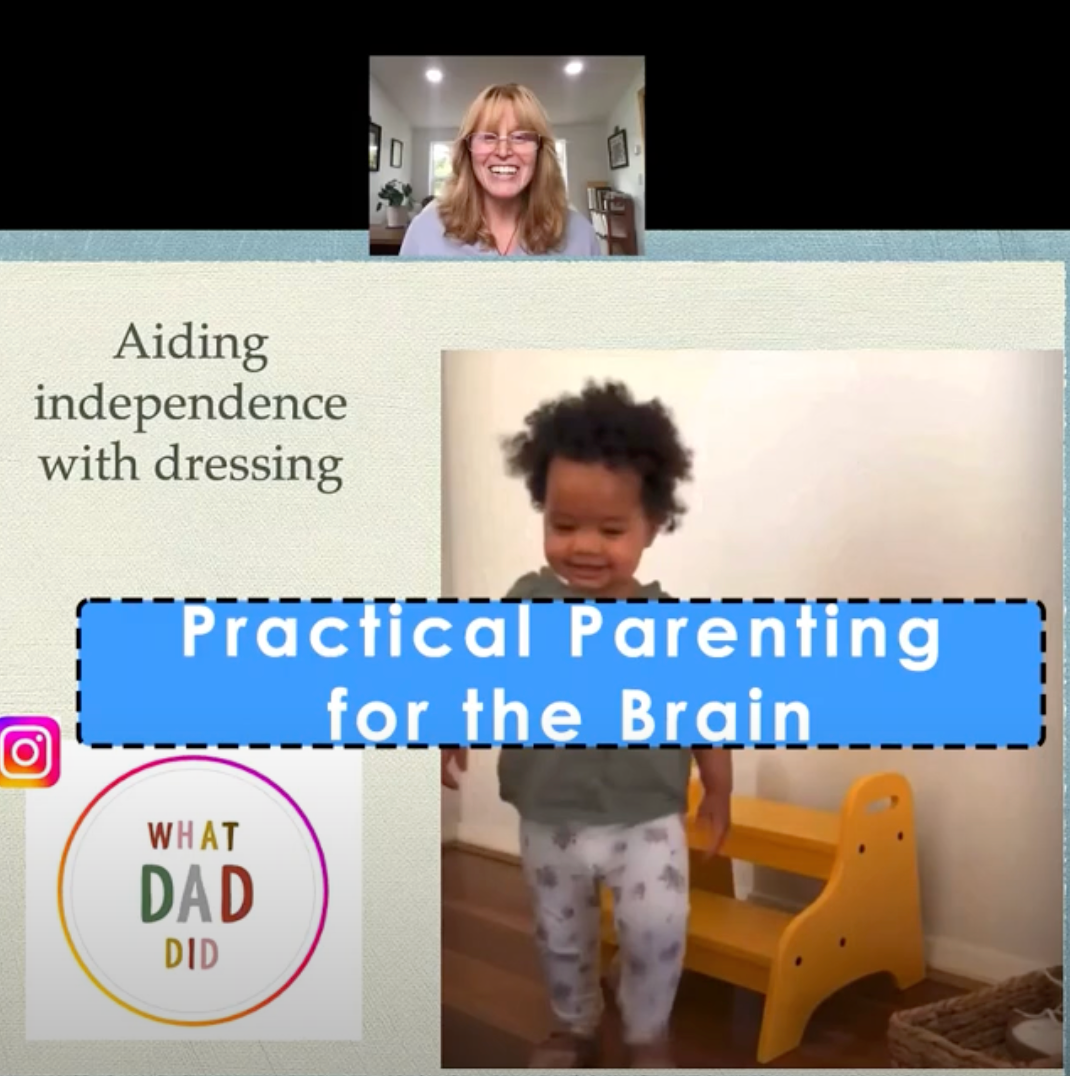Toileting Tips that Support the Brain

Potty-training, also known as Toilet Learning, is messy. There's no way around it. But, it doesn't have to be stressful on top of being messy! I've put together some basic information on how to accomplish this in a short YouTube Video (scroll down). This video is a shorter version of my Practical Parenting to Support the Brain video created for the Childhood Potential Conference (an online Montessori parenting conference that you won't want to miss).
Here's the big picture.
The Brain Part
- Default Mode Network (off-task, mind-wandering, self-reflection)
- Central Executive Network (on-task, prioritized action, focused attention)
- Salience Network (noticing what your brain is doing, toggling between networks)
Three key brain networks for potty-learning (and everything else) (Bressler & Menon, 2010)

We need to use all of these networks regularly to have a strong brain. Salience is the key network that allows us to toggle between being off-task (default mode) and on-task (central executive) activity. Salience is basically our "notice what our brain is doing" network. For example, our salience network is active when we realize that we are all caught up in thinking about how awesome someone else is or how awful we just messed up. It's also active when we realize we need to stop watching movies and start taking action to be well-prepared for an upcoming event. You can think of it as our metacognitive network (thinking about thinking).
At any rate, when we are learning to use the toilet instead of pooping in our diapers, we have to notice (1) the urge to move our bowels, (2) the experience of moving our bowels, and (3) the result. Get it?
This need to notice is the main argument against disposable diapers. Disposable diapers are too effective. Children don't even feel wet after they've released urine; there is no logical consequence to peeing in your pants! Without that, it takes longer to learn to use the toilet. See what I mean?
Use Cloth
So, pointer number one is to use cloth diapers. In addition to giving the child sensory feedback to voiding and being way better for the environment, cloth diapers will also let the adult know when the child is ready to start toilet education. Why? Because somewhere around 18 to 24 months, children will start to hold their urine. They'll be dry for a couple of hours and then it will all come out at once. As soon as that happens, it's your signal that toilet education can begin!
Now, if you're a disposable diaper/pull-up fan, you don't have to go cold turkey! Just save the disposables for long car rides or bedtime and use cloth diapers or underpants most of the time. However, the more you use cloth, the faster toilet learning will go. It might be messier, but it will be messier for less time.
An Accessible Toileting Area
Even before they can hold it, you can prepare your child's toileting area. You'll need the following:
- Potty that fits your child (these are better to begin with than toilet inserts)
- Change of clothing (it's going to be messy)
- Cleaning cloths (it's really going to be messy)
- Soiled laundry container
- Access to the toilet to empty the full potty
- Accessible way for the child to clean up spills and empty the potty
If you want, you can get a whole toilet learning kit from MontiKids (great company) so you don't have to find your own things.
The key is to have everything ready for the child to ease towards independence. Set things up so they can get the toilet paper, clean cloths, etc. without requiring help from you. They will, of course, need support while they're learning but once they get the hang of it, we want to be able to fade away and let them get down to business.
We start easing them in to toileting independence by doing the standing diaper change. So, yes, instead of laying the child down on a changing table, you stand the child up in front of you while you change them. You verbalize each step you are doing and invite them to participate in whatever parts they can (their capacity to be involved with this will grow over time). The key here is that the child is learning that toileting is something that they are actively engaged in. They are transitioning from passive to active.
Make it a routine
Once they are ready to actually sit down on the potty, try to get into a regular routine of using it. Here are some key times to go to the potty, even if nothing comes out:
- Upon waking
- After eating (gastrocolic reflex)
- Before heading out
- Before sleeping
Always be sure to guide the child to wash their hands after toileting, even if nothing comes out. You're creating a lifelong habit here that dramatically influences human health. (Don't get me started on the history of keeping the toilet away from the kitchen in human history,... it took us forever to figure this one out.)
And when you first start, just clear your calendar for a couple of days. Don't even go to the grocery store. Your job is to support toileting. Period. So put on the cotton undies and get ready for a massive mess! You'll just be mopping all weekend with your child. No problem.
Start Young
You'll know your child is ready to be introduced to the potty when they start to hold it. With my own daughter, she was around 18 months old when she would hold it for a couple of hours and then let it out in a huge gush that completely overwhelmed her cloth diaper. When that happens, it doesn't mean you need to switch to disposables! It means you need to help them learn how to let it go in the right place.
And yes, you read that right, my daughter was 18-months-old when she was ready to start using the potty. This is much younger than many of us in our culture expect (we must have been brainwashed by the diaper industry). This varies from child to child but most children are ready before they reach 24 months. If you get them started at the right moment, it will be much easier than if you wait.
Avoid stress
No matter what comes up, try not to lose it! It is normal for children to have accidents or forget to use the potty, even after they've been reliable for a while. It's just part of typical development. When there is a mess, your job is to maintain calm and steady behavior and work together with the child to clean it up. The last thing you want to do is trigger an acute stress response. That is bad for the brain (watch the video below or read my blog post on Stress & Resilience for details).
I hope this helps! Please add your comments, tricks, and tips below. All of us working together can lighten the load for those who follow!
References
Bressler, S. L., & Menon, V. (2010). Large-scale brain networks in cognition: emerging methods and principles. Trends in Cognitive Sciences, 14(6), 277-290.









2 comments
@Jan, let’s hope it helps!!
Julia Volkman
This is a very helpful blog to share with new parents who are wondering about toilet learning. It offers sound advice backed up with solid reasoning to back it up.
Thank you, Julia.
Jan Malkar
Leave a comment
This site is protected by hCaptcha and the hCaptcha Privacy Policy and Terms of Service apply.